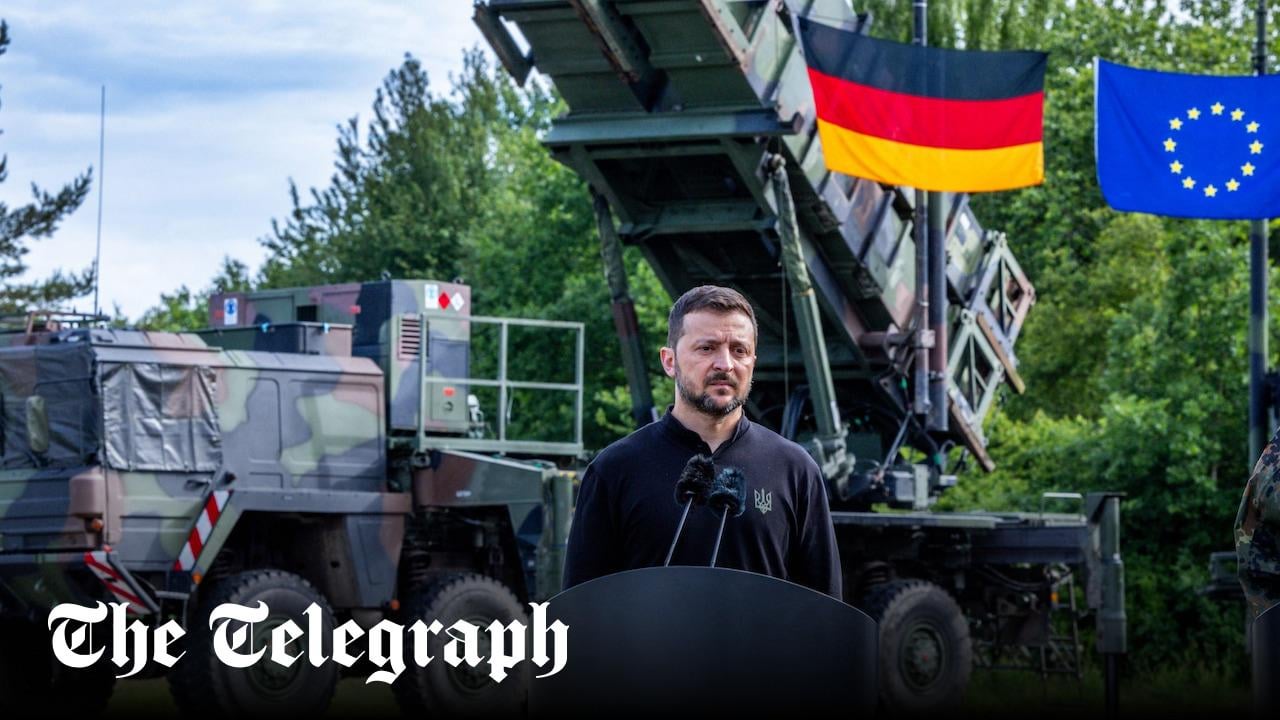
Frozen Russian assets ‘to pay for Trump’s Ukraine weapon fund’
https://www.telegraph.co.uk/world-news/2025/07/15/frozen-russian-assets-to-pay-for-trump-ukraine-weapons/
by BestButtons


Frozen Russian assets ‘to pay for Trump’s Ukraine weapon fund’
https://www.telegraph.co.uk/world-news/2025/07/15/frozen-russian-assets-to-pay-for-trump-ukraine-weapons/
by BestButtons
2 comments
Article contents:
*By Joe Barnes, Brussels Correspondent, 15 Jul 2025 – 05:58PM BST*
Europe is exploring using frozen Russian assets to pay for Donald Trump’s $10 billion (£7.4 billion) weapons package for Ukraine, the Telegraph can disclose.
Under the plan, profits generated from almost €200 billion (£173 billion) of Russian Central Bank assets seized by the European Union could be used as part of the bloc’s contribution to the new war chest.
The potential move formed the first formal discussion among European governments after Mr Trump announced a deal to arm Ukraine with weapons and air defence systems via Nato.
Diplomatic sources told The Telegraph that EU foreign ministers asked how Mr Trump’s plan would work during a meeting in Brussels on Tuesday. Wider details had yet to be shared with European capitals, one source said.
Mark Rutte, Nato’s secretary-general, said the deal would involve Nato buying American air defence systems, missiles and other ammunition before handing them to Kyiv.
He said at least eight member states had signed up to the scheme as he announced it alongside the US president in the Oval Office on Monday.
A Nato official said: “It is widely considered that Nato’s support mission for Ukraine – Nsatu – will play the lead role in coordinating purchases of American weapons and their eventual delivery to Kyiv.”
Ministers and officials said it would be more logical for Nato to oversee the scheme than one of its member states because of concerns over transparency.
Xavier Bettel, Luxembourg’s foreign minister, joked that the scheme would need a “sugardaddy” to oversee it – a reference to Mr Rutte calling the US president “daddy” at the recent Nato summit.
However, there were some reservations about using Nato to purchase weapons on behalf of Ukraine because of fears it could be seen as a provocation by Moscow.
Under the most likely plan, a central, Nato-controlled cashpot will be topped up by European allies and Canada.
The money will then be used to make purchases from a “shopping list” of American weapons and ammunition created by the Ukrainian government.
Radosław Sikorski, Poland’s foreign minister, suggested to EU colleagues the bloc’s contribution from the fund could come from the profits of frozen Russian assets.
“Should it be a burden shouldered by our taxpayers or the Russians,” he told the room, according to a source familiar with the discussions.
Brussels had been discussing its own warchest for weapon purchases using the seized assets.
But using the cash towards the new scheme is seen as more efficient and a better way to maintain Mr Trump’s support for Ukraine.
European sources have noted a significant about-turn in the president’s stance on Ukraine, after previously being accused of being friendly towards Moscow.
Topping up the American scheme will also come as a direct contribution to the Nato defence spending target of 3.5 per cent, making it easier for countries to hit the goal.
Details of the military aid deal are still to be finalised, according to Nato officials, although the first deliveries of Patriot air-defence batteries are expected in Ukraine within days.
Sources said they would still have to hammer out particulars, such as what long-range missiles could be made available to Kyiv.
Most of these decisions will be in the hands of the White House in the coming days as the scheme takes shape.
Meanwhile, the EU is expected to sign off on its 18th package of sanctions against Russia at a meeting on Wednesday.
**‘Catch-all powers’**
The measures are expected to hand unprecedented “catch-all” powers to customs officials, who will be able to seize shipments out of the bloc they believe could make their way to Russia.
The system being introduced by Russia is purchasing European goods to fuel its war machine through third countries, such as Kazakhstan or Turkey.
Under the scheme, exporters of seized shipments will have to provide cast-iron evidence that the freight will not make its way to Russia before it is released.
Brussels will also target Moscow’s “shadow fleet” of oil tankers, sanctioning a refinery in India and a bank in China suspected of supporting Vladimir Putin’s sale of fossil fuels abroad.
As previously, not actual assets but only profits generated from them.
Comments are closed.